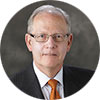Current Perspective
The Changing Eye Care Workforce
Download PDF

Over the past 20 years, the medical literature is replete with physician workforce projections—nearly all of which have been (sometimes grossly) inaccurate. Such studies garner attention because access to care, cost of care, and system design are directly related to the provider supply. (I hate the term “provider” as much as anyone, but in this scenario the providers of care are not all physicians.)
Manpower forecasts in medicine are difficult to “get right” because there are many variables beyond inflow from training and outflow from death, disability, and retirement from clinical practice. These variables include numbers of other providers and their practice patterns, changing population and disease demographics, new treatments and technologies, changes in practice efficiency and throughput, telemedicine, subspecialization, changing practice models, and changes in patient demand versus need. Think about the unanticipated changes that have occurred in ophthalmology recently. For example, which model predicted the impact that anti-VEGF drugs would have on retina workflow in AMD and diabetes? Which model predicted the substantive increase in patient throughput due in part to new models of practice? Which model predicted Internet-based refraction and glasses prescription?
Workforce studies are not arcane reading best left for epidemiologists. Practicing ophthalmologists benefit from understanding them, too. They influence payment, funding for graduate medical education, scope of practice arguments, and practice dynamics.
Consider the following facts:
- In a 2016 study, the Association of American Medical Colleges projected a total physician shortfall of between 61,700 and 94,700 by 2025. The shortfall will be greatest for surgeons.
- The current numbers of actively practicing ophthalmologists and optometrists in the United States are difficult to assess but are probably around 17,000 and 40,000, respectively.
- A 2014 study commissioned by the American Optometric Association concluded that by 2025 there will be an excess of up to 9,100 full-time equivalent (FTE) optometrists. A separate optometric analysis concluded that there is already a 12,000+ FTE optometric oversupply.
- The total number of ophthalmology residents has increased by about 7% over the past decade.
- Over approximately the same time period the capacity of optometry schools has increased by about 60%.
- There is no evidence to suggest that ophthalmologists are yet retiring at a higher rate. The number of Academy members who switched to a retired classification in 2015 was the lowest in 10 years. The second lowest rate was in 2014.
- In 2015, 43% of Academy members self-identified their practice as 100% comprehensive ophthalmology. It was 48% in 1999.
- Nearly 60% of current U.S. ophthalmology residents plan to enter a fellowship.
- 32% of Academy members are in solo private practice. 60% practice in groups of 1-3.
- The average wait time for nonemergency eye problem–driven appointments has not changed in 8 years.
- About 40% of Academy members plan to increase their office and surgical loads.
These statistics do not lead to an overarching conclusion about eye care manpower (or womanpower). They do provide, however, a glimpse into the complexity of the issue, illustrate some perhaps counterintuitive trends, and emphasize the need for flexibility in system design and individual practice forecasts.
What is far less clear is how much productivity can be wrung out of the present and future ophthalmologic workforce without negatively impacting care quality, patient satisfaction, or physician well-being. History has demonstrated, however, that we tend to underestimate both our own flexibility and the unpredictability of advances in science and technology.